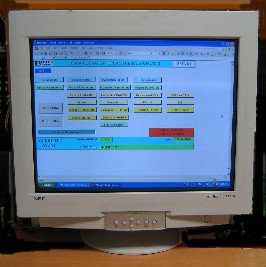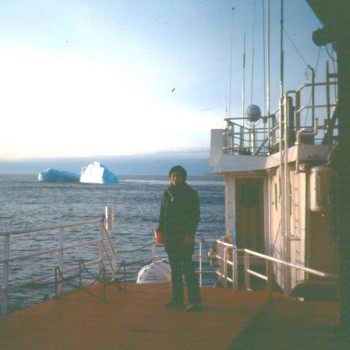|
|
|
|
|

Consulting Services
Since 1975 |
Software
Probabilistic Ship/Platform
Collision Model (PSPCM) |
 |
|
Site
Navigation |
1. General
Description |
|








Software Quick Links
BRISC
PEERS
PSPCM
Other
Software
|
The Bercha Group
Probabilistic Ship/Platform Collision Model (PSPCM) is a simulation
model suitable for evaluating the probability of collision of different
types of ship traffic in a shipping lane with a fixed platform on FPSO.
PSPCMR, a variation of PSPCM, models collision with randomly or
non-linearly moving vessels such as fishing vessels. Because of its
versatile probabilistic capabilities, the model is suitable for the
calculation of first order probabilities as well as second order
adjustments to account for effects of vessel traffic management systems,
changes in vessel distributions from year to year and environmental and
operational parameters. PSPCM is implemented through a simulation
program called @ Risk with a spreadsheet and graphic interface to
Microsoft Excel. |
|
2. Parameters
All input parameters can be either single value numbers or distributions
of virtually any type. Both empirical numerical distributions and closed
form distributions can be utilized. The following are the principal
input variables:
|
|
L = Width of shipping lane in vicinity of targets (for non-normal
distributions)
CPA = Closest Point of Approach
SD = Standard Deviation of vessel distribution in lane
F = Total vessel flux or the number of vessels per year crossing a line
perpendicular to the edge of the shipping lane (as a CDF or triangular
distribution)
Fi = Any number (i = 1, 2, 3…. n) of classes of ships constituting the
total flux. Usually three classes are used (e.g., large, medium, small
vessels).
Ki = Form of distribution of traffic intensity of Class i across the
shipping lane
Bi = Beam of ship in Class i
Tj = Target located at xj, yj within shipping lane
Dj = Effective diameter of target Tj
pij = Conditional probability of collision of vessel of Class i on
collision course with target Tj. This probability is calculated through
a fault tree, which can take into effect numerous pre-disposing factors. |
 |
|
3. Modeling
Process
For a given set of inputs (see attached example) the model is run for an
optimal number of Monte Carlo trials. Outputs are distributions of
probability of collisions per year for each class of ship with each
platform, as well as the collision probability for all classes. The
model lends itself to easily consider the second order effects of the
presence of the targets by:
Change of distribution, Ki, of traffic across the lane to accommodate
effects of VTM.
Reduction of probability of collision, Pij, given a collision course, as
a result of location of targets on charts and communication through VTM.
The model is a generic model developed previously by the Bercha Group
for use in risk analyses conducted for marine offshore operators and the
Canadian Coast Guard. It has been adapted to make use of current
software PC capabilities from it previous mainframe format. |
|
 |
[About Us]
[Services]
[Projects]
[Photo
Gallery]
[Publications]
[Software]
[Links] [Contact Us] |
|
This page and all
contents are Copyright © Bercha Engineering Limited.
Page
updated:
November 24, 2014 |

